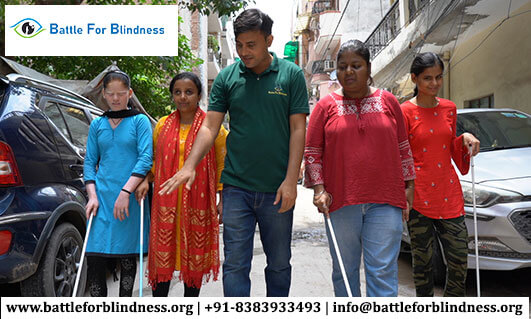
Cortical blindness is a unique and often misunderstood condition that affects vision, not because of problems with the eyes themselves, but due to issues within the brain. This type of blindness challenges traditional understandings of vision loss, as it highlights the complex relationship between the brain and our ability to see. In this blog, we will explore what cortical blindness is, its causes, symptoms, and the available support for those living with this condition.
What is Cortical Blindness?
Cortical blindness is a form of vision loss that occurs when the visual processing centers in the brain, specifically the occipital lobe, are damaged. Unlike other types of blindness where the eyes or optic nerves are affected, cortical blindness stems from the brain’s inability to interpret visual information received from the eyes.
Despite having fully functional eyes, individuals with cortical blindness may be unable to see, or they may experience distorted or incomplete visual perceptions. The condition can vary in severity, ranging from partial to complete vision loss, depending on the extent of brain damage.
Causes of Cortical Blindness
Cortical blindness can result from various factors that cause damage to the brain’s visual processing areas, including:
Stroke: One of the most common causes of cortical blindness is a stroke that affects the occipital lobe. A stroke can disrupt the blood flow to this part of the brain, leading to damage and subsequent vision loss.
Traumatic Brain Injury (TBI): Severe head injuries can damage the occipital lobe or other related areas, resulting in cortical blindness. The impact of the injury may vary depending on the extent and location of the brain damage.
Infections: Infections that spread to the brain, such as encephalitis or meningitis, can cause inflammation and damage to the visual processing centers, leading to cortical blindness.
Oxygen Deprivation (Hypoxia): Lack of oxygen to the brain, which can occur during cardiac arrest, drowning, or other medical emergencies, can lead to widespread brain damage, including in the areas responsible for vision.
Brain Tumors: Tumors that grow in or near the occipital lobe can press on or invade these critical areas, disrupting normal visual processing and potentially causing cortical blindness.
Congenital Conditions: In some cases, cortical blindness can be present from birth due to developmental issues or complications during childbirth that affect the brain.
Symptoms of Cortical Blindness
The symptoms of cortical blindness can vary widely depending on the extent of brain damage. Some common symptoms include:
Complete Vision Loss: In severe cases, individuals may experience total blindness, where no visual information is processed by the brain, despite the eyes being structurally intact.
Partial Vision Loss: Some individuals may retain limited vision, but it may be significantly impaired. They might see only vague shapes, colors, or light, without clear details.
Visual Field Deficits: Cortical blindness can cause loss of vision in specific parts of the visual field, such as peripheral or central vision.
Visual Agnosia: This condition involves the inability to recognize or interpret visual stimuli, even though the person can see them. For example, someone may see an object but be unable to identify it.
Visual Hallucinations: Some individuals with cortical blindness may experience visual hallucinations, where they see things that aren’t there. These hallucinations are usually the brain’s attempt to fill in gaps caused by the loss of visual information.
Blind Sight: In rare cases, individuals with cortical blindness may demonstrate “blind sight,” where they can respond to visual stimuli without consciously perceiving them. This phenomenon occurs because some visual pathways may still be intact.
Coping with Cortical Blindness
Living with cortical blindness can be challenging, but various coping strategies and support systems can help individuals adapt to their condition:
Vision Rehabilitation: Vision rehabilitation programs focus on helping individuals maximize their remaining vision and adapt to their visual limitations. This may involve training in the use of assistive devices, orientation and mobility training, and learning new ways to perform daily tasks.
Assistive Technology: A wide range of assistive technologies can aid those with cortical blindness. Screen readers, voice-activated devices, and other tools can help individuals access information and communicate more effectively.
Occupational Therapy: Occupational therapists work with individuals to develop strategies for maintaining independence in daily activities. This might include learning new techniques for cooking, cleaning, and personal care, or using adaptive devices to make tasks easier.
Emotional Support: Coping with vision loss can be emotionally challenging, and individuals with cortical blindness may benefit from counseling, support groups, or therapy. Connecting with others who share similar experiences can provide comfort and practical advice.
Family and Community Support: A strong support system of family, friends, and community resources can make a significant difference in the lives of those with cortical blindness. Encouraging independence while offering help when needed is key to fostering a positive environment.
Conclusion
Cortical blindness is a complex condition that challenges our understanding of vision and its relationship with the brain. While it presents significant challenges, with the right support and coping strategies, individuals with cortical blindness can lead fulfilling lives. Understanding the causes, symptoms, and available resources is crucial for both those affected by this condition and the people who support them. Through education, adaptation, and resilience, those living with cortical blindness can navigate their world with confidence





